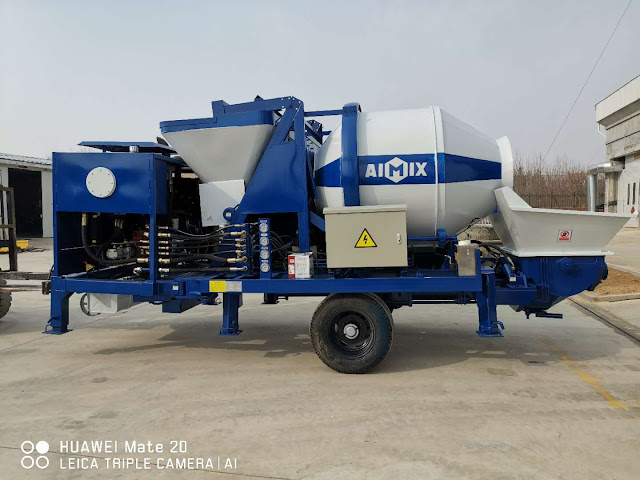Next-Gen Self-Loading Mixers Boost Site Safety and Efficiency in Latin America
Construction sites in Latin America are becoming more complex, with projects spanning dense urban areas, steep rural landscapes, and remote industrial zones. As infrastructure demand grows across the region, construction companies are under increasing pressure to meet tight deadlines without compromising safety or quality. In this context, next-generation self-loading concrete mixers are emerging as essential tools—not just for their mobility and efficiency, but also for how they enhance job site safety and reduce human error.
By combining automation, smart diagnostics, and integration with other equipment like concrete pumps, these advanced machines are revolutionizing how concrete is mixed, transported, and poured across Latin America’s diverse construction environments.
Safety First: Reducing Human Error Through Automation
One of the most notable benefits of next-gen self-loading concrete mixers(auto hormigonera) is their ability to reduce reliance on manual processes. Traditional on-site mixing methods require multiple workers to handle loading, measuring, and transporting concrete—a setup prone to accidents, inconsistencies, and communication breakdowns.
Today’s smart mixers simplify this process through automated weighing systems, recipe-based mix control, and single-operator functionality. With precise control over material inputs and real-time monitoring, operators can maintain consistent mix quality without leaving the cab. This significantly lowers the risk of exposure to heavy machinery, reduces fatigue-related errors, and minimizes the need for multiple personnel around moving parts.
In rugged terrains like the Andes or rain-prone areas in Brazil, where operating conditions are harsh, this safety improvement is especially valuable.
Built-In Diagnostics and Real-Time Monitoring
Next-generation self-loading mixers are also equipped with intelligent diagnostic systems that monitor machine health in real time. Sensors track key metrics such as hydraulic pressure, engine temperature, fuel consumption, and component wear. These systems alert operators to potential issues before they cause breakdowns or safety hazards.
This proactive maintenance approach not only improves safety but also prevents costly delays on the job site. If you're running a mixed fleet that includes other machines like concrete pumps(bombas concreteras), the ability to maintain uptime across all equipment is vital to overall project success.
Efficiency Gains: One Machine, Multiple Tasks
Latin American job sites often face logistical challenges—such as limited space, difficult terrain, and long distances from batching plants. Next-gen self-loading mixers address these challenges with their multi-functionality. They handle loading, mixing, transporting, and pouring in a single unit, making them ideal for isolated or scattered sites where setting up a full concrete plant isn’t feasible.
Moreover, when paired with a concrete pump, these mixers become even more powerful. The mixer delivers fresh concrete exactly when needed, and the pump ensures efficient, targeted placement. This synergy reduces idle time, prevents material waste, and speeds up construction schedules.
Meeting Environmental and Safety Standards
Construction safety regulations across Latin America are becoming stricter, especially in countries like Chile, Mexico, and Colombia. New-generation self-loading mixers are designed with compliance in mind. Features such as enclosed cabs, emergency stop systems, reverse cameras, and ergonomic controls all contribute to a safer operating environment.
Additionally, these machines are more environmentally friendly. With optimized fuel usage and reduced material waste, they help contractors meet sustainability goals while keeping sites clean and hazard-free. This is particularly important in environmentally sensitive regions, such as the Amazon Basin, where construction activity must balance development with ecological responsibility.
How It Affects the Bottom Line
While these innovations come with a higher upfront investment, the long-term benefits are significant. The use of smart self-loading concrete mixers reduces the number of machines and laborers needed on-site, cutting down on operational costs. And when paired with concrete pumps(bomba estacionaria de concreto), they streamline the entire concrete delivery process, enhancing overall job site productivity.
Fewer delays, fewer safety incidents, and better concrete quality all contribute to a healthier bottom line. Companies that invest in this technology can also market themselves as forward-thinking and safety-conscious—qualities increasingly demanded in competitive project bids across Latin America.
Conclusion: Smarter, Safer, and More Efficient
In the evolving construction landscape of Latin America, safety and efficiency can no longer be seen as trade-offs. The latest self-loading concrete mixers prove that it’s possible to have both. With smart controls, diagnostic tools, and integration capabilities, these machines are helping contractors meet higher standards without slowing down.
Whether building highways in mountainous regions or pouring foundations in urban centers, adopting next-gen mixers and combining them with tools like concrete pumps is a smart move toward safer, faster, and more cost-effective construction.




Comments
Post a Comment